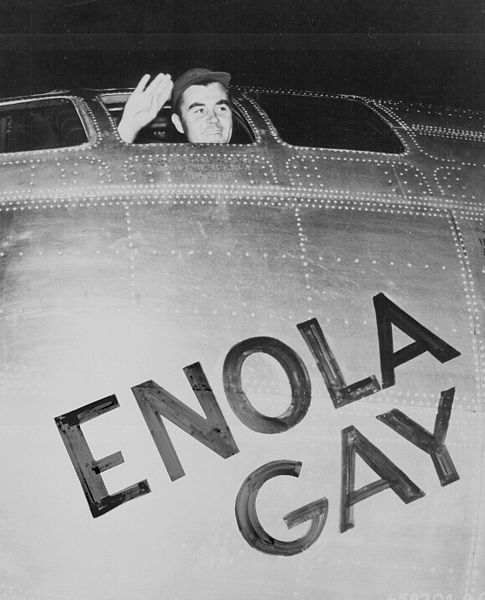The atomic bombings of Hiroshima and Nagasaki were nuclear attacks during World War II against the Empire of Japan by the United States of America at the order of U.S. President Harry S. Truman. After six months of intense firebombing of 67 other Japanese cities, the nuclear weapon “Little Boy” was dropped on the city of Hiroshima on August 6, 1945, followed on August 9, 1945 by the detonation of the “Fat Man” nuclear bomb over Nagasaki.


These are to date the only attacks with nuclear weapons in the history of warfare.
The bombs killed as many as 140,000 people in Hiroshima and 80,000 in Nagasaki by the end of 1945, roughly half on the days of the bombings. Since then, thousands more have died from injuries or illness attributed to exposure to radiation released by the bombs. In both cities, the overwhelming majority of the dead were civilians.
Six days after the detonation over Nagasaki, on August 15, Japan announced its surrender to the Allied Powers, signing the Instrument of Surrender on September 2, officially ending the Pacific War and therefore World War II. (Germany had signed its Instrument of Surrender on May 7, 1945, ending the war in Europe.) The bombings led post-war Japan to adopt Three Non-Nuclear Principles, forbidding that nation from nuclear armament.
The Target Committee at Los Alamos on May 10–11, 1945, recommended Kyoto, Hiroshima, Yokohama, and the arsenal at Kokura as possible targets. The committee rejected the use of the weapon against a strictly military objective because of the chance of missing a small target not surrounded by a larger urban area. The psychological effects on Japan were of great importance to the committee members. They also agreed that the initial use of the weapon should be sufficiently spectacular for its importance to be internationally recognized. The committee felt Kyoto, as an intellectual center of Japan, had a population “better able to appreciate the significance of the weapon.” Hiroshima was chosen because of its large size, its being “an important army depot” and the potential that the bomb would cause greater destruction because the city was surrounded by hills which would have a “focusing effect”.
Secretary of War Henry L. Stimson struck Kyoto from the list because of its cultural significance, over the objections of General Leslie Groves, head of the Manhattan Project. According to Professor Edwin O. Reischauer, Stimson “had known and admired Kyoto ever since his honeymoon there several decades earlier.” On July 25 General Carl Spaatz was ordered to bomb one of the targets: Hiroshima, Kokura, Niigata, or Nagasaki as soon after August 3 as weather permitted and the remaining cities as additional weapons became available.
Although the atomic bomb put an end to WWII, it started a new war, the Cold War.
http://www.youtube.com/v/i3fmPaWyA7U&hl=en&fs=1&rel=0&color1=0x5d1719&color2=0xcd311b
The following are a series of 5 parts to an original 1945 documentary about the bombings and their aftermath.
1/5
http://www.youtube.com/v/RRF2BbSRDmg&hl=en&fs=1&rel=0&color1=0x5d1719&color2=0xcd311b
2/5
http://www.youtube.com/v/3FtssfiZVxY&hl=en&fs=1&rel=0&color1=0x5d1719&color2=0xcd311b
3/5
http://www.youtube.com/v/CCAtBoYbEIo&hl=en&fs=1&rel=0&color1=0x5d1719&color2=0xcd311b
4/5
http://www.youtube.com/v/NzWGerKOBFk&hl=en&fs=1&rel=0&color1=0x5d1719&color2=0xcd311b
5/5
http://www.youtube.com/v/P75GYaYl5w0&hl=en&fs=1&rel=0&color1=0x5d1719&color2=0xcd311b








